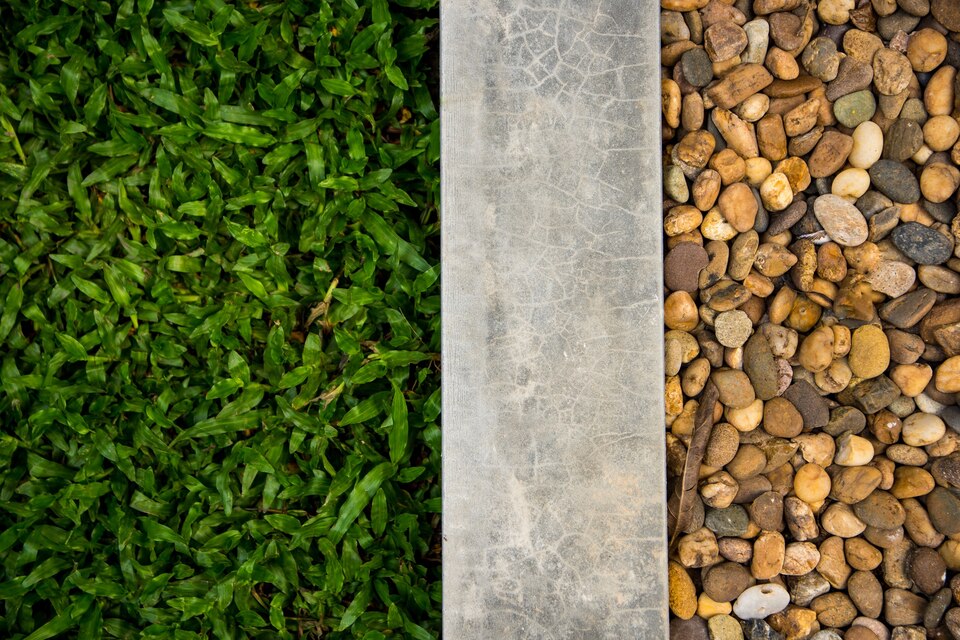Choosing the best landscape materials for your yard is essential for creating a beautiful and functional outdoor space. Whether you are starting from scratch or upgrading an existing landscape, selecting the right materials ensures your yard meets both aesthetic and practical needs. Understanding your landscape’s specific requirements helps you make informed decisions, providing a solid foundation for your project.
Understanding Your Landscape Needs
Assessing Your Yard’s Layout and Conditions
Before selecting landscape materials, evaluate your yard’s layout and conditions. Examine the soil type, sunlight exposure, and drainage patterns. Identifying these factors helps you choose materials that are best suited to your yard’s natural features.
Consider the current state of your yard. Are there areas that are prone to water accumulation or excessive dryness? Understanding these conditions will help you select materials that can address these issues. Our professionals can provide guidance on how to assess your yard and recommend appropriate solutions.
Determining the Purpose of Different Areas
Next, determine the purpose of different areas in your yard. Are you creating a garden, a play area, or a decorative space? Each area will have specific needs and functions, which will influence your choice of materials.
For instance, areas intended for heavy foot traffic, like pathways and patios, require durable materials like gravel or crushed rock. In contrast, garden beds benefit from nourishing materials like topsoil and mulch. Identifying the purpose of each section allows you to choose materials that enhance both functionality and appearance.
Prioritizing Functionality and Aesthetics
When selecting landscape materials, balancing functionality and aesthetics is key. Functional materials ensure that your yard serves its intended purposes effectively. Aesthetic materials contribute to the overall beauty and harmony of the landscape.
Combine different materials to create a visually appealing and practical yard. Use decorative gravel for pathways and durable topsoil for plant beds. Our technicians can help you make informed decisions that enhance both the look and usability of your outdoor space. Prioritizing these aspects creates a cohesive and attractive landscape.
Essential Landscape Materials for Your Yard
Types of Mulch: Benefits and Differences
Mulch is essential for maintaining healthy plant beds. Different types of mulch offer various benefits. Organic mulch, like bark chips and wood mulch, enrich the soil as they decompose. Inorganic mulch, like rubber or rock, provides long-lasting coverage with minimal maintenance.
Bark chips are popular in Seattle for their natural look and soil enhancement properties. Our professionals recommend choosing mulch based on your plants’ needs and aesthetic preferences. Understanding the differences helps you select the most effective mulch for your garden.
Choosing the Right Topsoil
Topsoil is crucial for plant health and growth. High-quality topsoil provides necessary nutrients and supports root development. When selecting topsoil, look for one that is rich in organic matter and free from contaminants.
In Everett, WA, our professionals can guide you in choosing the best topsoil for your specific planting requirements. Whether you’re starting a new garden or improving an existing one, the right topsoil makes a significant difference. Proper topsoil selection promotes vigorous plant growth and a healthy garden.
Varieties of Gravel and Crushed Rock for Different Uses
Gravel and crushed rock are versatile landscape materials used for pathways, driveways, and decorative areas. They come in different sizes and textures, each suited for specific applications. Pea gravel is ideal for walkways, while larger crushed rock is better for driveways.
Our technicians recommend assessing the intended use before choosing gravel or crushed rock. Selecting the appropriate size and type ensures durability and aesthetics. Whether enhancing a garden path or stabilizing a driveway, these materials offer long-lasting and visually appealing solutions.
Selecting the Best Landscape Supplies
Choosing Landscape Fabric and Edging
Landscape fabric and edging are vital components in maintaining the structure and appearance of your yard. Landscape fabric helps prevent weed growth by blocking sunlight while allowing water and nutrients to reach the soil. Edging materials, such as metal, plastic, or stone, are used to separate different areas, like pathways and garden beds, ensuring a clean and defined look.
When choosing landscape fabric, consider its durability and permeability. Our professionals recommend fabrics that are strong enough to resist tearing and have good water permeability. For edging, select materials that match the overall design and withstand weather conditions. Proper selection and installation of these supplies keep your landscape looking organized and well-maintained.
Essential Landscape Tools and Their Uses
Several essential landscape tools aid in creating and maintaining your yard. These tools include shovels, rakes, wheelbarrows, and pruning tools. Each tool has specific uses that make yard work easier and more efficient.
- Shovels: Useful for digging holes for plants, moving soil, and other materials.
- Rakes: Ideal for leveling soil, spreading mulch, and collecting debris.
- Wheelbarrows: Help in transporting heavy loads of soil, mulch, and rocks.
- Pruning tools: Important for trimming plants and ensuring healthy growth.
Specialty Products: When to Use Them
Specialty landscape products address specific needs or challenges in your yard. These include items like soil amendments, erosion control products, and deer repellents. Soil amendments, like compost or peat moss, improve soil quality and promote plant health. Erosion control products, such as retaining walls and erosion blankets, prevent soil loss in areas with slopes.
Tips from Our Professionals
Expert Advice on Material Selection
Our professionals have extensive experience in landscape material selection. They suggest starting with a clear plan and understanding your yard’s needs. Consult with experts to choose materials that fit your design and functional requirements. Checking samples and visualizing how materials will look in your yard can further aid in making the right choices.
Common Mistakes to Avoid
Avoid common mistakes like underestimating the amount of material needed or choosing unsuitable products for specific areas. Using poor-quality materials can lead to frequent maintenance issues. Our technicians advise against skimping on essential materials, as this can impact your landscape’s durability and appearance. Proper planning and quality selections prevent these problems.
How to Combine Different Materials for the Best Results
Combining different landscape materials effectively enhances your yard’s aesthetic and functionality. Use a variety of textures and colors to create visual interest. For instance, combining gravel pathways with lush mulch around plant beds creates a balanced look. Our professionals recommend considering the purpose and appearance of each material. Thoughtful combinations lead to a cohesive and attractive landscape.
Conclusion
Choosing the best landscape materials for your yard involves understanding your needs, selecting appropriate supplies, and following expert advice. Proper assessment, planning, and material selection create a functional and beautiful outdoor space. Consulting with professionals ensures that your landscape is well-designed and sustainable.
At Northwest Landscape Supply, we offer a wide range of high-quality landscape materials in Seattle to meet your needs. Our experts are here to help you make informed decisions for your yard. Contact us today to start transforming your outdoor space into a stunning and practical environment!





